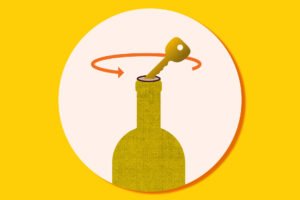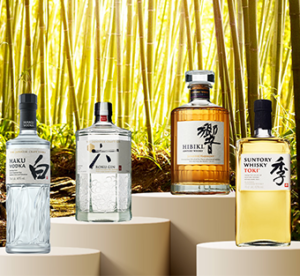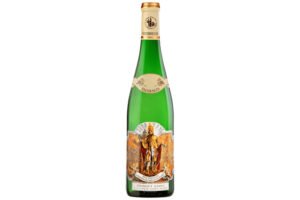Cult Wine Investment: Planning for the Future

[ad_1]

If you’re looking into a cult wine investment, top-rated producers like Screaming Eagle are a popular choice, but there are many other up-and-coming cult wines worthy of your attention.
While wines from the best Bordeaux and Burgundy producers will likely always have a place on wine investors’ shelves, more investors are filling up their cellars with the finest New World cult wines. That’s because a cult wine investment can be quite lucrative. Top-rated labels from producers like Screaming Eagle, Scarecrow, Sine Qua Non, and Dominus consistently perform well on the fine wine marketplace, often growing steadily in value over time.
But as these wines grow in popularity, they become more revered and more renowned. The top labels are no longer hidden gems that just a handful of wine investors know about. The growing value of cult wines means that it can be quite difficult to find these bottles on the market, especially since many cult wine producers only sell bottles through exclusive mailing lists. To overcome this, aspiring cult wine investors have to get an edge on the competition. They need to know more than just the rarest and most desirable wines — they also need information on which up-and-coming cult wines are likely to make the biggest market splash. In this guide, you’ll learn how to make a cult wine investment with an eye toward the future.
Why Are Cult Wine Investments Popular?
What sets a cult wine apart from other investment-worthy wines, such as First-Growth Bordeaux, is a specific combination of rarity and demand. A cult wine is loosely defined as any fine wine with a loyal fanbase and a demand that outweighs its supply. These wines are often relatively new to the marketplace (in fine wine terms, this usually means the producer has been making wine for less than 50 years or so). Some of the most popular cult wine producers got their start in the 1970s, and there have since been many other modern producers that have gained the same level of “cult status.” The term also most often applies to wines produced in the New World, though there are some exceptions.
By comparison, a wine like Château Petrus is just as rare and in-demand as some cult wines, however, this producer has a longer history than the average California cult wine producer, for example. You can think of fine wine like films. Storied Old-World producers are the Oscar-winning film classics, while New-World cult wines are the independent arthouse films that get plenty of buzz among aficionados.
However, popularity alone does not make a cult wine. Cult wines are quite different from the crowd-pleasing, mass-produced wines most serious investors tend to avoid. The best cult wines are produced in very low quantities each year and earn praise from critics for their exceptional quality. There’s often a fair bit of hype around the best cult wines, which drives up demand and, by extension, price. This is why many cult wine producers have chosen to sell their wine exclusively through private mailing lists, often to just a few thousand customers. Only the most dedicated investors have the opportunity to buy these rare bottles, leaving the rest to wait months and sometimes years to clear the waiting list.
Why Investors Love Cult Wines
Although this exclusivity is part of what drives up demand for these wines, they’re also in-demand because the best labels gain in value over time. Since some investors only have the opportunity to buy these wines from other collectors, rather than directly from the producer, collectors can increase the price of their wine based on this demand. For example, 2013 Dominus received a perfect score from some critics, and it continues to rise steadily in price year after year. It’s increased from about $400 per bottle, on average, to nearly $630 per bottle over the past two years. Liv-ex data also shows that the top 50 California producers, almost all of which fall under the cult wine category, outperformed both the Bordeaux and Italian fine wine markets in 2021 in terms of value growth.
Knowing this, cult wine investment has the potential to be incredibly profitable for investors. However, if you want to invest in these types of wines, you need to be aware of the latest market trends, including which wines are currently performing well and which labels are expected to perform well in the future.
Which Cult Wines Are Worth the Investment?
Generally speaking, if you’re looking into the best cult wine investment, California is the most important region. Specifically, Napa Valley is known for having the highest number of top-rated cult wines within its borders and this subregion continues to dominate the field. However, there are other up-and-coming regions producing fine, investment-worthy cult wines, and it may even be a benefit for investors to look beyond Napa for their next big purchase.
Which cult wines you invest in depends on your goals, experience, and budget. Regardless of these factors though, there are a few key qualities that all cult wines should have to be considered investment-worthy. They should be:
- Rare: Ideally with a production under 600 cases per year. If the producer has a higher production, the demand for the wines should at least be greater than the number of bottles released.
- Highly Rated: Looking back at historic average scores, the wines should consistently receive scores of 95+ points from respected critics like Robert Parker or Jeb Dunnuck, both of whom are especially known for their interest in cult wines.
- Age-Worthy: You can only make a return on your investment if the wine is designed to age for some time in a cellar before reaching peak maturity. This is why Cabernet Sauvignon, which is known to age well, is one of the most popular varieties used in cult wines. Other varieties, like Chardonnay, can also be long-lived but aren’t as common in cult wine labels as Cabernet.
Popular Established Cult Wines
If you’re looking for a reliable cult wine investment, there are a few producers that consistently perform well on the market. These producers are so noteworthy that they have established their high status on the fine wine market.
Any of these producers are well worth an investment. However, one possible downside to investing in these producers is that their wines are immensely popular already, and it can be quite difficult to find bottles with excellent provenance. You either need to clear the waitlist on these producers’ mailing lists (which can take as long as ten years), or you need to hire an experienced professional with access to allocations who can manage your portfolio for you.
Another option is to look a little further ahead to some of the wines that are still gaining in popularity and don’t have firmly established cult status. Below, you’ll find some recommendations on wines that might play a bigger role in the fine wine market moving forward.
What’s the Future of Cult Wine?
A profitable cult wine investment doesn’t usually stay a secret for long. New-World wines are gaining a fine reputation among critics, and even the most obscure regions and producers are having great success among investors. To compete with this, it’s important to be aware of some recent trends in the world of cult wine.
Producer Trends
Here are a few cult wine producers that are seeing some of the fastest market growth in recent years:
Investing in the latest vintages from these producers now could prove to be a boon later, especially if they continue to grow in popularity.
Regional Trends
Everyone is always looking for the next great cult wine producer, and one of the best ways to find them is by researching wine from up-and-coming regions. Here are just a few of the trending regional wines gaining a reputation top-quality cult wine producers:
- Washington state Cabernet Sauvignon, specifically Columbia Valley producers like Quilceda Creek and Cayuse
- Oregon Pinot Noir, specifically Willamette Valley producers like Domaine Serene
- Argentina Malbec, specifically Mendoza producers like Viña Cobos
- New Zealand, specifically the Marlborough subregion, known for Sauvignon Blanc
- Subregions of California outside of Napa Valley and Sonoma, including the Central Coast, Hunter River Valley, Santa Barbara, Paso Robles, Carneros, and Mendocino.
It’s still far too early to say exactly what these trending cult wine producers and regions will be worth in the future, but it’s important for every investor to at least be aware of them.
However, making a wise cult wine investment decision involves more than just an awareness of market trends. Even if you know which wines are most likely to gain in value over time, that doesn’t necessarily mean you’ll have access to those wines, or that you’ll find bottles with the clearest provenance.
One of the simplest ways to make a cult wine investment is to hire a professional to manage your investment portfolio. Vinfolio’s investment experts already have in-depth knowledge of cult wine values, top-tier producers and trending labels alike. We also have access to some of the most sought-after cult wine allocations — including some labels that are typically only accessible to mailing list members. Based on market data, our experts select cult wines for our clients and store these bottles in a secure, temperature-controlled warehouse. From here, Vinfolio’s experts handle the sale and are available to help you reinvest or rebalance when the time comes.
This is an excellent option for investors who are just dipping their toes into the world of fine cult wines, or those who are short on time. With the help of experts, you can find the right cult wine investment for your needs and plan for the future.
[ad_2]




